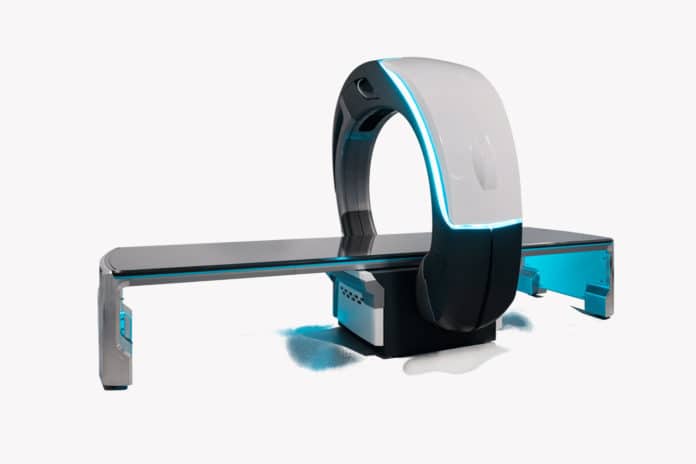Last week, the Israeli startup company Nanox has successfully demonstrated its Nanox.ARC next-generation x-ray prototype at the 2020 Radiology Society of North America (RSNA) Virtual Annual Meeting.
Nanox.ARC medical bed allows doctors to quickly scan a patient’s internal organs. The company claims that its digital X-ray machine, a Star Trek-inspired biobed is cheaper to use, easier to maintain, and doesn’t require installation in a hefty hospital facility. It is faster, more reliable, and more accurate, although not all experts agree with this.
During the presentation, CEO Ran Poliakine demonstrated the beds, which scanned a leg of lamb and some medical dummies for analysis. A pair of independent radiologists remotely monitored as the device scans objects and eulogized the work Nanox was doing.
One of the factors that make the Nanox.ARC different from the current X-ray machines is the greater number of tubes. It has six independent X-ray tubes, which can be used at different amplitudes and could make spotting small lesions and tumors easier. There are 10-centimeter cylinders that use “cold cathode” technology. The six tubes sit inside the ring, while a mechanical bed draws patients through them, enabling the machine to scan their whole body.
According to Nanox, the system could offer skeletal X-rays, as well as computerized tomography (CT) scans, at the same time. After a minute of processing, the data obtained allows you to create a 3D model of a person’s body, allowing professionals to see both the soft tissues and the skeleton.
The X-ray machine uses old TV technology from Sony, which launched the Field Emission Display project in 1998. It was intended to develop the MEMS chip, which was supposed to replace the outdated electron beam gun in the screens. Rather than a single electron gun firing at a screen, Sony succeeded in developing a MEMS chip that packed millions of tiny electron guns into a silicon wafer.
Early demonstrations of the technology were promising. But realizing that they were losing the competition with LCD/LED technology, Sony sold the technology to Japanese businessman Hitoshi Masuya. He then hired Poliakine to join and run the company, which has been working on adapting the technology for medical imaging.
It is still unclear whether the Nanox.ARC will measure up and produce the same results as today’s X-ray machines – something that will be investigated in the coming year. Nanox says that their Nanox.ARC will cost just $14,000, which can be compared with today’s X-ray machines, which can cost around $300,000.
The company intends to start the launch in the first months of 2021. However, Nanox initially does not plan to sell its machine to hospitals and large healthcare companies. But instead, these will be lent to various institutions that will have to pay $14 for every scan taken, which also gives access to cloud storage and the option to use an AI medical analysis service.
